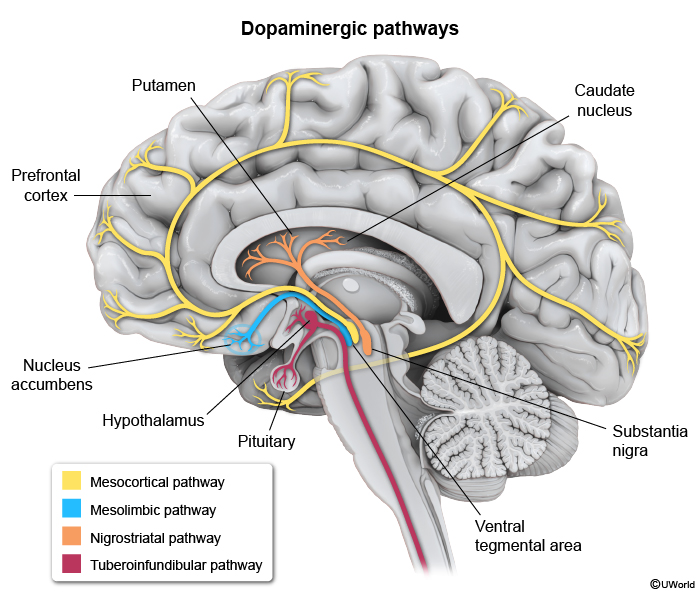Schizophrenia
Article Sections
Introduction
Schizophrenia is characterized by psychosis (eg, delusions, hallucinations, disorganized thoughts and behaviors, negative symptoms) of ≥6 months duration with social and occupational impairment. Symptom presentation, course of illness, and prognosis are highly variable, although most patients experience episodic symptom exacerbations and chronic functional impairment.
Epidemiology and risk factors
The estimated lifetime prevalence of schizophrenia is approximately 1%. Prevalence rates are similar in men and women. Symptom onset is typically between late adolescence and early adulthood (eg, mid-20s).
Factors that may contribute to the risk of developing schizophrenia include genetic predisposition (eg, first-degree relative with schizophrenia), environmental factors (eg, autoimmune disorders [celiac disease, thyrotoxicosis], cannabis use), and psychologic factors (eg, adverse childhood experiences).
Pathogenesis
The pathogenesis of schizophrenia is unclear, although it likely involves a combination of genetic vulnerabilities, neuropathology, and environmental factors such as:
Continue Learning with UWorld
Get the full Schizophrenia article plus rich visuals, real-world cases, and in-depth insights from medical experts, all available through the UWorld Medical Library.
Figures
